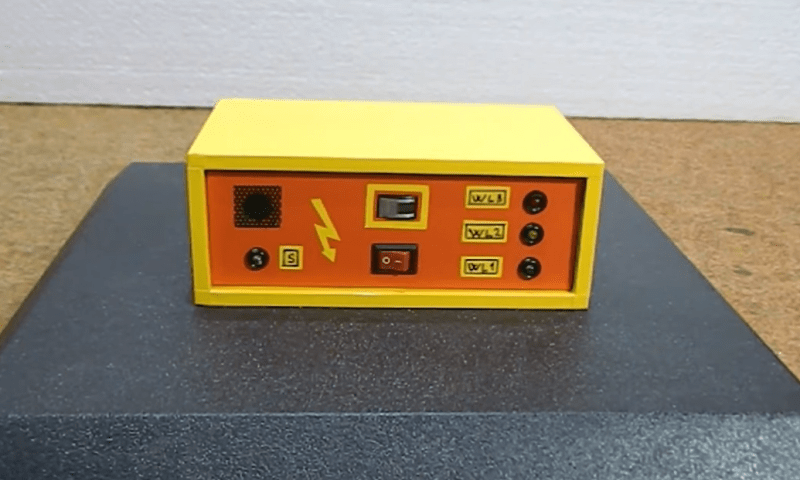Lightning is a powerful and seemingly mysterious force of nature, capable of releasing huge amounts of energy over relatively short times and striking almost at random. Lightning obeys the laws of physics just like anything else, though, and with a little bit of technology some of its mysteries can be unraveled. For one, it only takes a small radio receiver to detect lightning strikes, and [mircemk] shows us exactly how to do that.
When lightning flashes, it also lights up an incredibly wide spectrum of radio spectrum as well. This build uses an AM radio built into a small integrated circuit to detect some of those radio waves. An Arduino Nano receives the signal from the TA7642 IC and lights up a series of LEDs as it detects strikes in closer and closer proximity to the detector. A white LED flashes when a strike is detected, and some analog circuitry supports an analog galvanometer which moves during lightning strikes as well.
While this project isn’t the first lightning detector we’ve ever seen, it does have significantly more sensitivity than most other homemade offerings. Something like this would be a helpful tool to have for lifeguards at a pool or for a work crew that is often outside, but we also think it’s pretty cool just to have around for its own sake, and three of them networked together would make triangulation of strikes possible too.
















you may also enjoy lightningmaps.org. the best feature is that it shows the shockwave expanding at the speed of sound so once you calibrate for the delay, you can tell roughly which strike you are hearing at any one moment (assuming it nailed the location, which is not quite 100%)
Never get lightning where I live, but even looking at the map is super cool. Ira is going nuts!
Or for more info, see its parent data site https://www.blitzortung.org/en/live_lightning_maps.php
This is my go to now.
New Zealand used to have their own dedicated page which was significantly better then what’s available globally now. It had many different features like showing the storm cell, indicating the type of strike that it was (inner cloud or cloud to earth) and replay options which helped a user track an approaching storm cell.
Alas it was shut down for unknown reasons and I now depend on Blitzortung
Of course, triangulation and display of lightning strikes is already well in hand:
https://www.blitzortung.org/en/live_lightning_maps.php
http://www.lightningmaps.org
Trilateration. You know the lengths of the sides, nothing about the angles, which the side lengths are used to calculate.
https://www.britannica.com/science/trilateration
There is a world-wide lightning detection network. See:
https://www.blitzortung.org/en/live_lightning_maps.php
PhilC
important for makers is that they also have kits for the detectors used, for people interested to join
https://www.blitzortung.org/en/forum.php?tid=1656
Interesting, although I’m a bit put off by their refusal to make them open source.
A bit more advanced project using the same detector: https://www.element14.com/community/groups/azuresphere/blog/2019/11/10/sensing-the-storm-with-azure-sphere-am-radio-and-ir-thermometer
This is the same guy with the PEMF thing. At least this isn’t zapping people.
The enclosure seems also quite nice.
What is the material he is using for it?
Foam board (“modelling board”, “PVC board”) and cosmetic adhesive tape covering. I went through an awful lot of it in a previous job. Great for quick little visual mockups. Kinda awful for actual functional enclosures, for many reasons.
An AM radio works pretty well. Just plug the headphone socket into a sound card and start recording peaks in the static.
I used to set a dozen of them up with a synchronized time pulse; each one would record the sound onto a tape recorder and live in a taped shut tupperware box; I’d drop them off a mile apart in a big circle and compare to timing of the strikes to track the strike position and then go and investigate the spot of any big ones that might have touched ground. With modern timing, [ and ~1ns/foot ] it should be possible to use say four AM radios and an accurate timer and have them a meter or two apart.
I read the Title as: _Direct_ Lightning Strikes…
B^)
Could detect sound, and the distance, is it moving away
I once detected a lightning strike using nothing more than a telephone line, a raspberry pi, a modem and an answering machine.
Once.
I’m sure others here have used much more expensive hardware for the same method of detection.
A very similar sentiment as “all components are temperature sensors”
I wish I had lightning detection on my home assistant. Seems like a lot of existing solutions aren’t that great (looking at you AS3935). I’m not a fan of using HACS and the current method that’s out there for bringing in blitzortung’s data because it seems to break or fail often. When it works though, it is so cool.
What was your method for building the case? It looks like it came out nice!